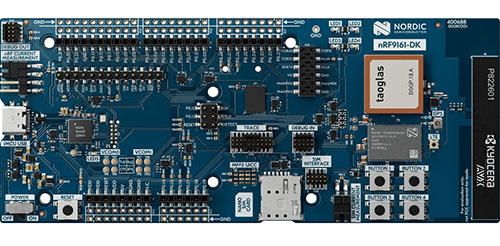用物联网开发套件加强产品开发
对用于原型或产品开发的嵌入式相关应用来说,物联网开发套件已成为重要的组成部分。在当前形势下,得益于最新物联网相关技术方面的进步,万物互联得以实现。到 2030 年,将有大约 290 亿台可产生数据的设备连接到互联网,这要归功于日益增长的汽车和工业物联网的需求。
《生活大爆炸》中有一个广受欢迎的场景,谢尔顿-库珀 (Sheldon Cooper)、莱昂纳德-霍夫斯塔德 (Leonard Hofstadter)、霍华德-沃罗威茨 (Howard Wolowitz) 和拉吉-库萨帕里 (Raj Koothrappali) 使用 X-10 系统通过互联网成功地打开了电灯和音响系统。如今,得益于物联网基础设施的进步,这种场景已成为现实。
 (图片来源:Pixabay)
(图片来源:Pixabay)
要设计功能先进的、复杂的物联网环境,就需要高性能连接解决方案。工程师们可以利用物联网开发套件的独有功能,如板载调试器,对微控制器单元进行编程和调试,从而为实现开创性想法开发原型。大多数物联网开发套件都能利用免费软件库有效地创建代码,灵活地进行创新。
一些开发套件具有多种功能,但任何开发人员或硬件工程师都必须关注一些基本功能。
- 传感器
传感器是我们日常生活的重要组成部分。传感器技术发展迅猛,为现代应用和创新提供了空间。所有对物联网相关应用具有重要意义的实时信息都是通过传感器获取的。
- 连接
无线模块已实现了与其他设备的通信,开发套件上的模块有助于开发人员轻松地将无线连接功能集成到应用中。最新的开发套件均配有双频 Wi-Fi 6 802.11ax、蓝牙 5.2、Zigbee 和 BLE 功能。
- 安全框架
在当今世界,确保物联网设备免受网络威胁至关重要。过去发生的一些明显的漏洞,如吉普车遭黑客攻击、DDoS 僵尸网络和易受黑客攻击的心脏设备等,对内置安全性提出了更高的需求。通过安全框架和基于硬件的安全措施,开发人员可采用许多开发套件来确保物联网相关应用开发的安全。
产品开发环境
随着近年来向开源生态系统的发展,开发人员有了更多的选择,可以尝试户友好型嵌入式开发平台。目前的开发套件还将不同的功能集成到一个开发套件中,使得工作变得更加简单,并加快了产品上市速度。许多制造商提供定制 IDE,可帮助工程师们快速调试项目并缩短开发周期。目前的 IDE 具有各种优势,例如可以访问软件库、快速入门指南、参考设计和云生态系统,从而为工程师设计原型提供了便利。
 图 1:Nordic Semiconductor nRF9161 开发套件。(图片来源:Nordic Semiconductor)
图 1:Nordic Semiconductor nRF9161 开发套件。(图片来源:Nordic Semiconductor)
市场上现有的最新开发套件可帮助开发人员快速构建解决方案原型,NRF9161-DK 开发套件(图 1)等平台可提供简化的设计集成,实现高效率和高可靠性。
该开发套件采用全集成 SiP,配备 64 MHz Arm Cortex-M33,通过 Arm TrustZone Arm CryptoCell 310 技术提供安全保护,包含 1 MB 闪存和 256 KB RAM,是物联网和嵌入式应用的理想之选。由于采用了 LTE-M、NB-IoT 和 DECT NR + 专用天线,该套件支持多频段操作。该开发套件还包括一个用于 GNSS 的贴片天线,配有 SWF 射频连接器,用于测量射频信号的性能。
NRF9161-DK 兼容 Arduino Uno Rev3,因此可以轻松地与外部设备屏蔽连接;同时,由于 nRF7002 评估套件 旨在补充 NRF9161-DK,因此可用于轻松评估 Wi-Fi 定位。
NRF9161-DK 上的 SEGGER J-Link 支持编程和调试,并支持对外部目标进行编程和调试。该电路板还提供了一个 USB 接口,用于调试/编程和为器件供电。
开发人员可以访问全套开发工具和资源,如 Nordic Developer Academy 的蜂窝物联网基础课程。对于其他的固件相关示例,开发人员可以使用 Nordic 的 nRF connect for Desktop 中的快速入门工具。这些开发套件的应用领域涵盖智能计量、智能农业、预见性维护、便携式医疗设备和工业 4.0。
工程师和开发人员可以利用功能强大的物联网开发工具包,帮助制造商构建开创性解决方案,改善人们的生活。

Have questions or comments? Continue the conversation on TechForum, Digi-Key's online community and technical resource.
Visit TechForum









